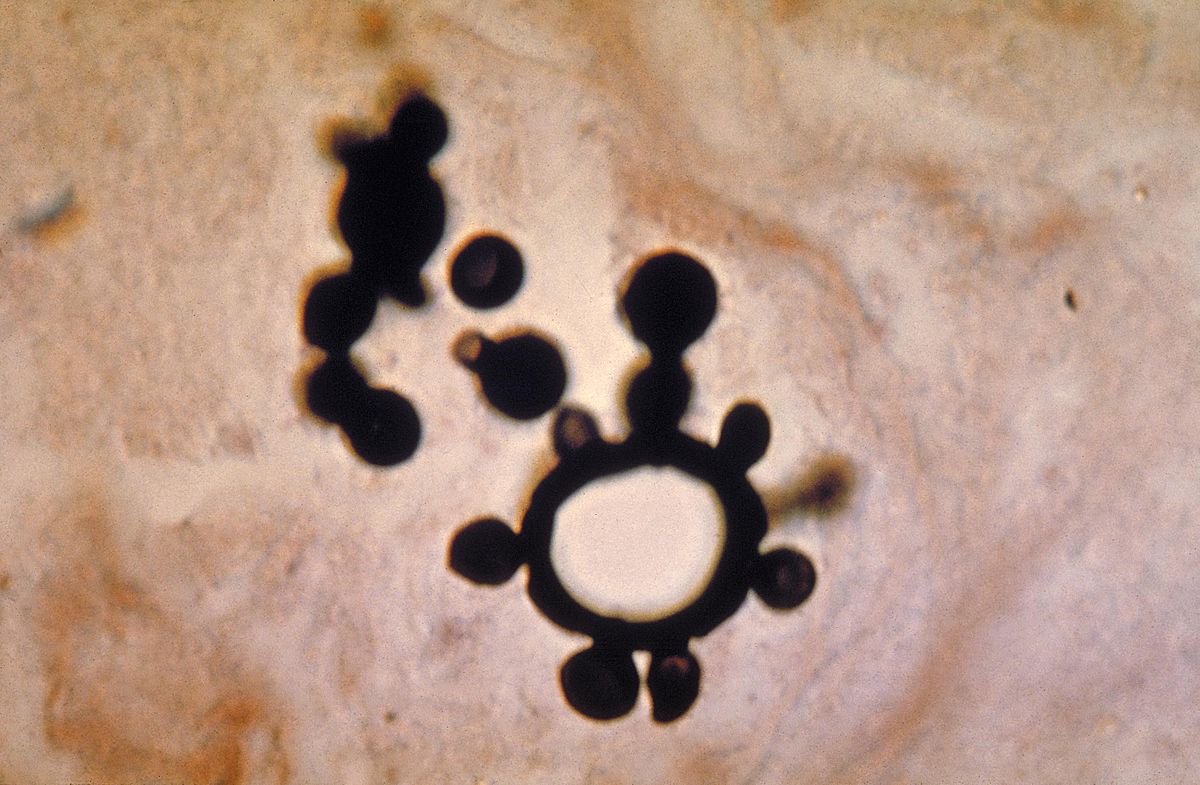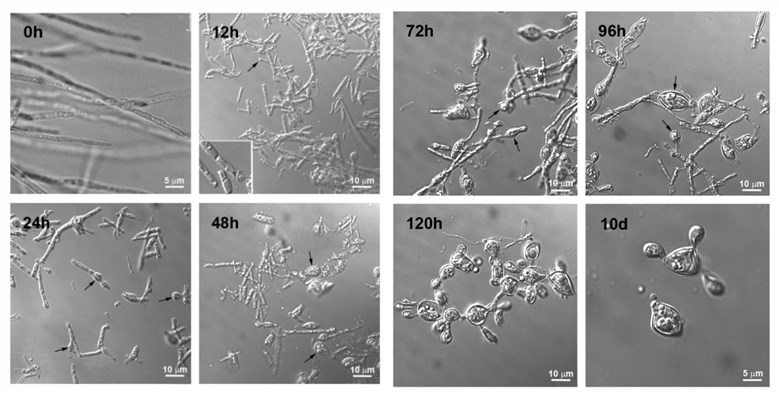As a leading company in the field of biological research and drug discovery, Creative Biolabs has gained a wealth of good reputation for successfully completed numerous challenges in antifungal drug discovery. Based on our advanced technology platform and experienced scientists, we are able to provide a series of antifungal drug discovery services including various fungal diseases and related fungi. Here, we describe a pathogenic fungus Paracoccidioides brasiliensis that can cause paracoccidioidomycosis.
Introduction
Paracoccidioides brasiliensis (P. brasiliensis), a dimorphic fungus and the causative agent of paracoccidioidomycosis, belongs to the genus Paracoccidioides, family Ajellomycetaceae, order Onygenales, class Eurotiomycetes, and division Ascomycota. Though the habitat of P. brasiliensis remains unknown, it has been isolated from soils, armadillos, penguins and bat feces. It is an endemic fungus prevalent in Latin America. It is a nonphotosynthetic eukaryote with a rigid cell wall and optionally intracellular with a chitin cell membrane.
Pathogenesis of P. brasiliensis
P. brasiliensis infects the host through the respiratory tract, which results in paracoccidioidomycosis characterized by a polymorphism of lesions involve mucous membranes, lymphatic system, the central nervous system, and lungs. The pathogenicity and invasion capacity of the P. brasiliensis seem to be associated with α-1-3-glucan and a glycoprotein Gp43. Gp43 is the main antigen secreted by P. brasiliensis, which also is the most specific for the diagnosis of the infection.
 Fig.1 The yeast form of P. brasiliensis. Distributed under CC BY-SA 4.0, from Wiki, without modification.
Fig.1 The yeast form of P. brasiliensis. Distributed under CC BY-SA 4.0, from Wiki, without modification.
Different Forms of P. brasiliensis
P. brasiliensis is a thermo-dimorphic fungus that transforms between a filamentous hyphae form and a cellular yeast form. The mycelial form of P. brasiliensis can be converted to the yeast from inside the mammalian host or at 37°C in vitro. The yeast-like P. brasiliensis can be converted to the mycelial form when exposed to the environment of 25°C. The mycelial form and yeast phases are different in morphology, biochemistry, and ultrastructure. The most significant difference between both forms is probably the cell wall polysaccharide, 1, 3-β-glucan in mycelia while 1, 3-α-glucan in yeasts. Research indicated that the yeast form is considered to be auxotrophic, which require exogenous sulfur-containing amino acids for growth. Paracoccin distribution plays important roles in growth and dimorphic transformation of P. brasiliensis.
 Fig.2 Time-lapsed transformation of P. brasiliensis hyphae to yeast forms.1
Fig.2 Time-lapsed transformation of P. brasiliensis hyphae to yeast forms.1
Research Progress of P. brasiliensis
A recent study showed that autophagy plays an important role during the thermal-induced mycelium to yeast transition of P. brasiliensis, which is suspected to be the reason for P. brasiliensis virulence and pathogenicity. The main host defense against P. brasiliensis is a cell-mediated rather than humoral immune response. Macrophages and polymorphonuclear leukocytes exert the major fungistatic effect against P. brasiliensis infection. New antifungal agents are under research, Thiosemicarbazide and ArtinM lectin exhibit immunomodulatory activity against P. brasiliensis. However, the sexual state or teleomorph of P. brasiliensis has not yet been reported, the actual genetic composition and chromosomic organization, chemical composition for each form and pathogenicity mechanism still have been unclear so far.
If you are interested in the fungal disease-related research we investigate, please contact us for more detailed information.
Reference
-
Oliveira, A.F.; et al. Paracoccin distribution supports its role in Paracoccidioides brasiliensis growth and dimorphic transformation. Plos one. 2017, 12(8): e0184010. Distributed under Open Access license CC BY 4.0, without modification.
For Research Use Only.


 Fig.1 The yeast form of P. brasiliensis.
Fig.1 The yeast form of P. brasiliensis.  Fig.2 Time-lapsed transformation of P. brasiliensis hyphae to yeast forms.1
Fig.2 Time-lapsed transformation of P. brasiliensis hyphae to yeast forms.1


